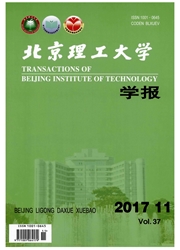

 中文摘要:
中文摘要:
鉴于常见的色调再现算法或者参数过多,或者空间常数过大,使其工程应用受到限制,为此,提出了一种基于视锥细胞适应模型的影像再现算法。在该模型中,视锥细胞转换函数的半饱和常数随着输入强度的变化而变化,而半饱和常数与其色素半漂白常数的相对比例关系保持不变,以便符合色素漂白与神经反馈对视锥适应的相对作用关系。通过大量实验仿真,并与其他方法处理结果的比较发现,该模型具有以下特点:①能够有效突出图像亮区和暗区的细节,且动态范围压缩性能较好;②能够在很大程度上减弱色调再现领域经常出现的“光晕”效应;③能够避免retinex模型和对抗神经网络等模型带来的“白化”现象;④处理结果的色调偏离真实景物的程度较低,其颜色恒定性能较好;⑤在计算背景光强时由于所用模板尺寸很小,因而速度远远快于常见的算法。该方法有希望应用到实时性要求较高的工程领域。
 英文摘要:
英文摘要:
A cone adaptation model based method for realistic image rendition is proposed after analysis of the disadvantages of several tone rendition algorithms. In this method, the half-saturation constant of the original cone cell transduction function varies with input intensity, while the ratio between the half-saturation constant and the half-pigment bleach constant of the function is kept invariant to be in accordance with the effects of pigment bleaching and neural feedback on cone adaptation. Many simulation results and comparison between this method and some other tone reproduction algorithms show that this method can illustrate good performance of dynamic range compression while keeping color constancy, greatly reduce the "halo" artifacts frequently occurring in the field of tone reproduction, and avoid the "graying out" effects brought about by models such as the retinex and the opponent neural network. Since the convolution kernel used for computation of the ambient intensity is of very small size, its computational speed is far exceeding that of some classical image rendition methods and it may be used in some real-time applications.
 同期刊论文项目
同期刊论文项目
 同项目期刊论文
同项目期刊论文
 期刊信息
期刊信息
